Natural Diamonds: Alluring and Distinct
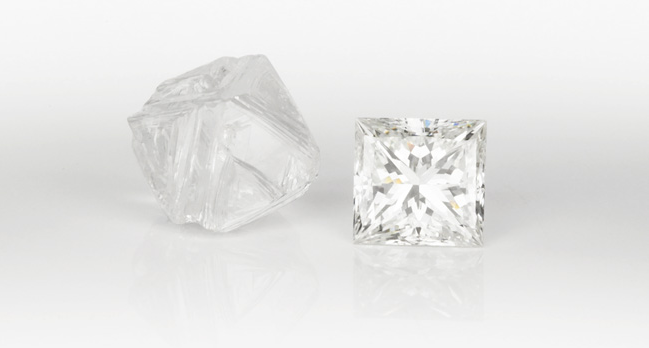
Diamonds are nature's extraordinary gift to the world. The miracle of a natural diamond is unparallel. Just like a snowflake, each diamond is significant and bespoke with beautiful natural patterns that have a unique story to tell. If you're curious as a cat, you'd always want to know where your products originate from.
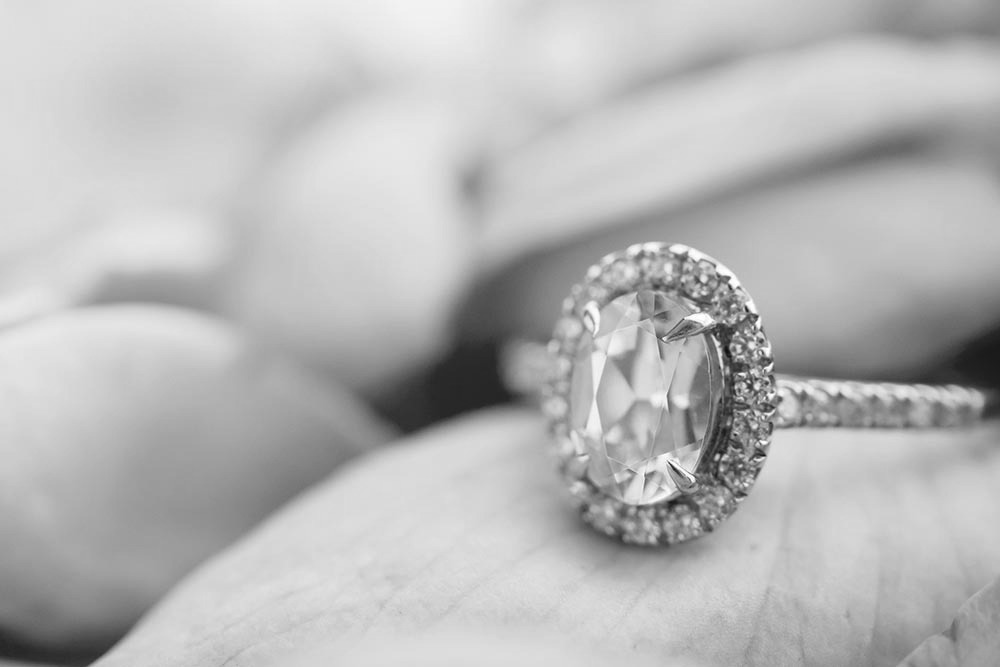
How are diamonds formed? What is the magic wand that turns a piece of rock into a beautiful engagement ring?
Diamonds carry a bespoke cubic crystal lattice structure. A natural diamond is created from carbon and is the most rigid natural substance on earth. Natural diamonds are created over a long period of one to up to three billion years under natural conditions of extreme pressure and significantly high temperature. An interesting aspect to note is that they are at least 85 miles below the earth's surface. Once the diamonds have been curated under these extreme conditions, it journeys through the molten rock to the earth's plane where it is mined, refined further, and designed into a piece of beautiful jewelry or used for industrial motives.
Interesting Fact!

A diamond's melting point is 3548*C
LAB GROWN DIAMONDS
ONE OF MANY QUESTIONS WE GET IS "ARE LAB-GROWN DIAMONDS REAL?
THE ANSWER IS "YES".
Lab-grown diamonds are also better known as man-made diamonds or lab-created diamonds. The only thing that differentiates a lab-grown diamond from a natural diamond is its origin. A lab-grown diamond is "grown" in a lab using revolutionary technology that replicates the entire process. This results in diamonds that are chemically and optically like the ones created under the surface of the earth.
Sometimes, lab-grown diamonds are also called synthetic diamonds. The technical term "synthetic" might be one of the reasons why people conclude that lab-grown diamonds are fake. Lab-grown diamonds are certified and graded using the same format as natural diamonds.
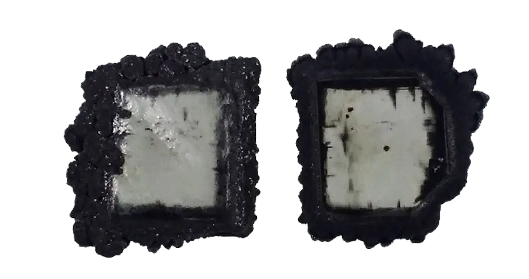
THE PROCESS
There are two processes followed by labs to create diamonds; High Pressure-High Temperature (HPHT) and Chemical Vapor Deposition (CVD).
HPHT diamonds are created from one of the three processes – a belt press, the cubic press, and the split-sphere press. All these processes create an ideal environment of intense pressure and the appropriate temperature favorable for diamond growth.
The HPHT process initiates as a minute diamond seed that is placed inside the carbon. With the help of one of the manufacturing processes above, the seed is exposed to a very high temperature of 1500 degrees Celsius. This is further pressurized to roughly 1.5 million pounds. This results in the melting process of the carbon and the diamonds begin to form around the seed. It is then cooled down to form a carbon diamond.
A CVD diamond starts as a paper-thin slice of a diamond seed which is ideally an HPHT diamond. The diamond is placed in a closed chamber and heated approximately around 800 degrees Celsius. This chamber is filled up with gases like Methane. These gases are ionized further through technology and they break the molecular tight bonds in the gases. This process responds to the diamond seed and it steadily crystalizes.
Advantages of Lab-Grown Diamonds:
LESS EXORBITANT
The cost of a lab-grown diamond is comparatively lesser than a natural diamond. This, however, does not mean lab-grown diamonds as very "cheap". Natural diamonds and lab-grown diamonds have the exact costs when it comes to cutting and polishing.
The supply chain for a natural diamond is a very long one. For a diamond to make it from its raw state to a retailer involves a list of miners, cutters, polishers, distributors, manufacturers, and retailers. On the contrary, the supply chain for a lab-grown diamond is relatively shorter eliminating the mining process. Since it takes fewer hands to make, it is eventually less expensive.
Ethically Sourced
Many years ago, the mined diamond industry was under scrutiny for its unethical practices in production and distribution. These are also called blood or conflict diamonds that involved exploiting miners and their families through unethical demands.
With the introduction of the Kimberly process in 2003, these practices have been reduced and are under a watchful eye. It is estimated that around 99.99% of mined diamonds are free of conflict. As a buyer, it is often a relief to know the origin of the diamond, especially in cases of a lab-grown diamond as it involves the use of cutting-edge technology.
The Grading Process

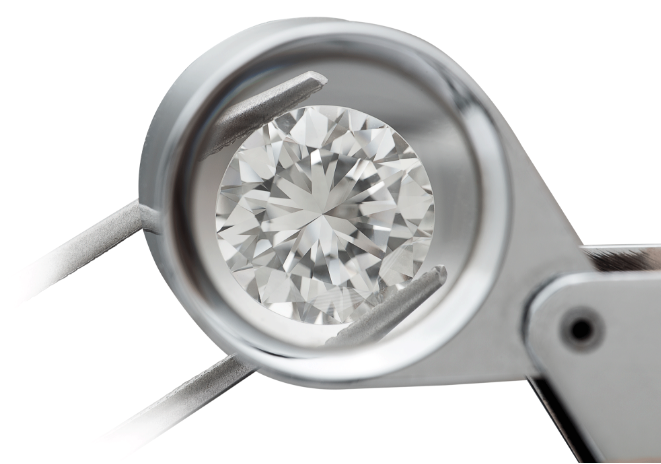

The well-known diamond certification labs are: -
Fancy Colored Diamonds: Pleasing and Desirable

Colored diamonds are created from more than a billion carbon atoms. When small to minute elements are consolidated into the crystal lattice or a structure is redefined, this results in the change in the color of the diamond.
Colorless diamonds are the
Colored diamonds are highly sought after by many experts in the business. They are rarer than clear colorless diamonds. Moreover, their rarity is magnified further because of the intensity in color and some fancy colored diamonds are rarer than the rest of their counterparts.
Let's understand the significance of each colored diamond...

Yellow
Yellow hues take place when the saturation levels are significantly high, creating a distinct and powerful appearance compared to other hues. This results in a broad range of colors. It is not uncommon for other hues of green, orange, and brown to have yellow as a modifying color. The presence of nitrogen as an impurity triggers the coloration.

Brown
Brown hue diamonds are other frequently preferred diamonds. In their most natural state that aligns with the environmental conditions, they're found in places like Australia. The saturation process for brown hues is not as high as the other hues, such as yellow. The range of brown hues, with the elemental hues towards red or yellow, coupled with modifiers like pink, green, or orange, offers the broad fancy range of colors in one palette. An interesting process of stretching and separating atomic bonds caused by intense pressure results in the magnificent brown that many diamond enthusiasts yearn for.

Black and Grey
Natural grey colors vary from light grey to the darker ones to eventually the darkest scale of black. Although grey is a modifying tint for most fancy colors, they are commonly seen with violet and blue colors. Natural black diamonds are nature's distinct occurrence and have an idiosyncratic appearance compared to other diamonds. Because they are opaque, their attractiveness is focused on their luster. Sometimes, black may also be due to highly saturated dark green that is linked to the existence of nitrogen in high quantities.

Pink
Pink is associated with femininity. This is the primary reason why it is the most popular color in today's business. They are originally from the Argyle mine in Australia that has sourced close to 90% of the world's pinks. A fancy pink diamond without a modifying hue is distinct. They are often paired with orange, purple, or brown creating an impressive and attractive range of appearances. Their structural defect is the primary cause of the color as opposed to any level of impurity. This process is similarly linked to red and brown colors.

Orange
Orange is rich, bright, and vibrant that occurs due to extremely high saturation. The presence of nitrogen is the reason why orange has a vibrant color. Orange hues are most often accompanied by some hues of yellow, brown, and sometimes red and pink. It is challenging to rank the color's rarity, however, gemologists often regard the orange to be the fourth or the fifth rarest color. Orange diamonds have a peculiar nickname and are fondly called "pumpkin diamonds".

Green
Fancy green colored diamonds generally appear pale with lighter tones. While other fancy colors are created due to structural deformities, the green color may happen after growth. When nitrogen atoms have deeper concentrations, they produce a darker appearance with modifying hues of brown, grey, or yellow as well. Green diamonds are also rare to find and because of this rarity, they are often expensive than the other diamonds.

Blue
Fancy blue diamonds hold a distinguished appeal in business due to their deeper attractiveness. Sparkling blue diamonds with elevated saturations are extremely rare to find. Blue hues are combined with a darker tone and the elevated saturation underlines the depth of the color. Most blue diamonds that create the traditional blue color are the result of atomic impurities. They are rare and equally appealing to the eyes.

Purple
Purple colored diamonds are the most valuable ones due to their eye-catching and vibrant appearance. Purple diamonds are distinct, and their levels of intensity differ from light purple to a deeper shade. They are mostly paired with pink that enhances their vibrancy further. Sometimes they are also paired with blue, grey, or red ones.

Violet
Compared to purple and red, violet fancy diamonds are unbelievably rare. An interesting thing to note is that they are almost non-existent at carat weights that are above 1ct. They are also extracted from the Argyle mine in Australia, the same location from which the pinks and reds originate. The presence of hydrogen components results in a deeper shade of violet. They are often paired up with hues of grey and blue.

Red
Fancy red diamonds turn out to be the most attractive and rarest of rare colors. Unlike other diamonds, they do not acquire their color from any impurities. The precise cause of the color is still a mystery to many gemologists. They believe that changes in the atomic structure result in a deeper shade of red. An interesting thing to note is that red diamonds do not carry varying levels of intensity.
Natural Diamonds or Lab-Grown Diamonds: What's the difference?
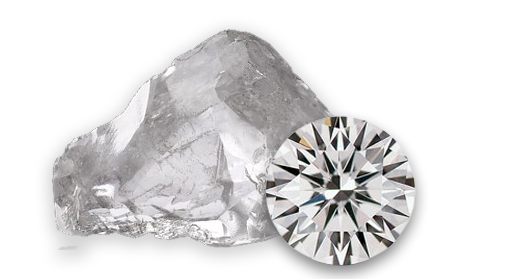
VS
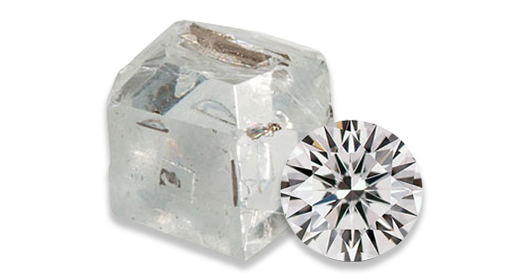
THE ANSWER IS...
There is no visible difference between the two diamonds. Even an expert gemologist needs specialized equipment to notice the difference. The expert will be able to identify minute distinctiveness through magnification. The ideal way to note the difference is to check the diamond's certification. Jewelers must mention whether the diamond is a mined one or lab created. It is important to note these parameters as it has a tremendous impact on the price point and resale value of the diamond.
If there is no visible distinctiveness between a natural and a lab-grown diamond, which one should one opt for?
This question is a tough one, however, different buyers have different preferences. If the appearance of a diamond is of prime importance to you, then it ideally does not matter whether it is natural or synthetic. No one will notice them unless you divulge that information. There are, however, some major differences to consider in your buying decisions.

Price
The pricing criteria for a lab-grown diamond differ depending on where you procure it from and whether it is tailor-made. The style or cut you choose from also impacts the price of the lab-grown diamonds. Despite these specifications, lab-grown diamonds are significantly cost-effective, almost 50-60% cheaper than natural diamonds. This difference is due to the reduced investment in the supply chain. The supply of natural diamonds is restricted due to the billions of years it takes for nature to create one. With lab-grown diamonds, there is no ceiling on the supply as advanced technology makes it possible to create one at a lower price point.
Ecological Impact
Many buyers are mindful of the environmental impact of the mining process. That does not mean the mining process is unethical. But the point is that lab-created diamonds have the least detrimental impact on nature and are often sustainable than those unearthed. Because the advancement of technology has created the possibility to lower the costs, supply chain and is environmentally sustainable as well, many buyers have a keen interest in these.
Aesthetic Element
Natural diamonds and lab-grown diamonds are mostly identical. If you purchase a ring with a lab-grown diamond, it is almost certain no one will notice it unless you disclose it to them. In almost every case, a lab diamond will have the same aesthetic elements, shine, and brilliance as a natural one, so if the sheer beauty of the diamond appeals to you, then a lab-grown diamond is a cost-effective choice.




